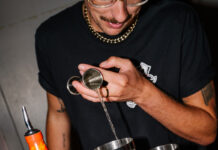
By Jack Cummins
You’re about to take a big step on the hospitality ladder: acquiring your own business.
A restaurant has come on to the market and it ticks all the boxes. You’ve engaged solicitors with commercial property and licensing expertise and your lawyer has the transfer of the premises licence in hand – but what else is on the horizon so far as licensing is concerned?
A close look at the premises licence is the first step towards maximising trading opportunities.
Let’s say you’ve bought an Italian restaurant and plan to convert to an American-style diner with an emphasis on attracting family business.
It’s almost certain that a number of variations to the premises licence will be required. There are two types of variations: minor and non-minor (the latter usually referred as a ‘major variation’).
In the case of a minor variation, the application must be granted by the licensing board and doesn’t need to be advertised, although there may be a quibble as to whether the change is actually ‘minor’, particularly when it comes to capacity calculations if the council’s officials aren’t in agreement with your designer or architect.
You’ll be changing the name of the business: that counts as ‘minor’.
On the other hand, major variations follow a more burdensome procedure. The application fee will likely be north of £100 (it’s only £20 for a minor variation) and a hearing before the licensing board is required – for which you’d be wise to engage a lawyer.
Premises licence descriptions may contain a hidden trap.
A number of years ago I received a bizarre call from a new client. The conversation started like this. “Woolworth’s next door has closed down and I have to change my licence.”
The connection between the retailer and the client’s licence was far from obvious. It turned out that when the application was made to ‘convert’ the licence to the new system some 14 years ago, a foolish approach had been taken to the description of the premises in the licence. It stated that the pub was located at the north end of a particular street “immediately adjacent to a Woolworth’s store”. So, the demise of Woolworth’s and the arrival of a new trader had an unwelcome consequence: the description had to be changed by means of a major variation.
In the case I’m considering, it’s possible the licence will refer to an Italian restaurant and that will require adjustment. Other major variations are possible, thinking particularly of layout changes.
If the configuration shown on the premises licence layout plan is to be altered, I’d expect a change in the occupant capacity. If it falls, the variation is minor and if there’s an increase that would need a major variation.
I always recommend the employment of a firm with a solid track record in preparing licensing drawings: if that advice isn’t taken there may well be muddles ahead.
Perhaps there are opportunities to enhance the business which will also lead to a major variation.
Home delivery has, of course, become a very common offer and, as readers will have gathered from previous legal columns, many licensing boards look for specific permission for food and drink deliveries in the operating plan (although in my view that approach is wrong).
It’s also possible that the arrangements for the admission of children and young persons could benefit from some expansion. You may want to have a look at the board’s policy in this area just in case the previous owner wasn’t taking full advantage of what’s permitted.
Staying in the area of policy, is there room to expand licensed hours? Has maximum advantage been taken of outside drinking?
It’s important to pull together as much as possible in one application and avoid the expense of another trip to the board.

Q&A with Jack Cummins
Q: I shop occasionally in a convenience store down the road from my pub. On most visits there are large stocks of beer multipacks and other alcohol products sitting on the floor between the aisles and adjacent to the wine display shelving. I’m pretty sure this is illegal, not to mention a tripping hazard. Can you advise?
A: In all likelihood the shopkeeper is ‘overtrading’. It would be very unusual for a premises licence to authorise that sort of arrangement. The premises licence operating plan sets out the off-sales capacity while the associated layout plan identifies the display areas. A departure from these arrangements constitutes a criminal offence. I’m aware of a case where police officers detected off-shelf displays, only to be told by shop staff that they were just about to stock up the shelves. That didn’t wash, and the matter was reported to the Procurator Fiscal for prosecution.
Q: I manage a large hotel with a restaurant open to the public as well as residents. The terminal licensed hour under the licence is 1am. Am I correct in saying that customers staying in the hotel overnight can continue to sit in the area and order alcohol after that time (if I have sufficient staff)?
A: The Licensing (Scotland) Act allows alcohol to be sold to and consumed by a person who resides on the premises outwith licensed hours. Otherwise, in relation to non-residents, alcohol can be consumed at a meal at any time within 30 minutes of the end of licensed hours, provided (1) the alcohol was sold during licensed hours; (2) at the same time as the meal; and (3) for consumption at the meal. You’d have to be sure that those staying on are residents. If there’s a visit by police or an LSO, the production of a key card or some other evidence of resident status will inevitably be required.



















